Unintended Consequences
By John Mauldin
Loose Monetary Policies and Emerging Markets
So far we have focused on the United States and other mature, developed economies that have far too much debt. With Japan, the United States, the United Kingdom, and Switzerland at close to zero percent interest rates, it seemed like a good idea to stimulate the economy. However, emerging markets that maintain pegged currencies or that shadow the dollar are essentially reduced to importing excessively loose monetary policies. Reserve growth across many emerging countries has been very strong over the last year. Emerging Asian countries account for almost 50 percent of global foreign exchange reserves. Huge Asian reserve growth since early last year is a result of mimicking loose monetary policies in the developed world to keep their currencies competitive. China has accumulated the most reserves of any emerging market country. This is directly related to its currency peg and its need to recycle the dollars it gets from its exports.
A result of Asian emerging markets’ importing loose monetary policy from developed markets is that domestic inflation rates are rising quickly, as policy rates remain too accommodative. Asian emerging market countries are facing a trilemma: They can fix any two of a pegged exchange rate, free flows of capital, or independence in monetary policy, but not all three. The end result is likely to be higher policy rates and currency appreciation. (See Figure 15.1.)
Bubbles in Emerging Markets
Many emerging markets will double or triple over the next few years. Emerging markets are extremely small as a percentage of total global market capitalization. When investors diversify away from developed markets, it will be like putting a fire hose through a straw. Liquidity from developed markets will overwhelm emerging markets. Part of this is from investors in the developed world wanting to go where the growth is, but part of it is a result of quantitative easing all over the world, especially in the United States. That is why you see emerging markets like Brazil taxing inbound capital flows in an effort to keep their own economies from developing a bubble. (See Figure 15.2.)
There are good reasons why the United States and the United Kingdom are among the highest capitalizations. In part, this is because a higher percentage of companies are publicly traded in the United States and the United Kingdom, whereas in other countries, many more are privately held, family-owned, or indeed government-run. Individually, almost all emerging markets are less than 0.5 percent of total world capitalization, as Figure 15.3 shows.
To further emphasize the small size of some emerging equity markets and their potential to grow, in Figure 15.4 we have compared the total market caps of some of these markets alongside the market caps of some well-known blue chip stocks (in millions of $).
Consider the following examples: Microsoft has a bigger market cap than all of Indonesia, General Electric and Wells Fargo have market caps almost double that of all of the Philippines, Monsanto and Time Warner have bigger market caps than all of Vietnam and Pakistan, and GAP Inc’s market cap is almost double that of Sri Lanka’s.
In the reflation trade, a few characteristics drive outperformance in emerging markets:
• Generous liquidity, that is, rapid monetary expansion
• Positive demographics
• Declining real interest rates
• Underleveraged consumer
• Banking sector with low loans-to-GDP ratio
The main countries that satisfy these requirements are Turkey, Malaysia, India, Indonesia, and Brazil.
Local conditions in some emerging market countries will act as a fire starter to excessive liquidity from abroad. In countries like Indonesia, Brazil, and Turkey, due to solid economies, increasing productivity, and thus falling inflation, they are transitioning to lower interest-rate regimes. This often has the consequence of detracting investors from the falling returns on cash and debt products and pulling them toward higher-yielding equities.
Further, large populations and still relatively low levels of GDP per capita give some idea of the scope for expansion in countries like China, India, Indonesia, and Sri Lanka if the prosperity of more developed economies, such as Taiwan and the Czech Republic, is anything to go by.
In this scenario, liquidity is likely to remain well above the norm for some time, and China will be little different from the other emerging markets:
Small markets + Ample liquidity + Investor risk appetite
+ Historically low interest rates = Bubblelike conditions
Chinese equity, property, and other asset markets will benefit hugely. China differs from many other emerging markets because it has tight capital controls that keep a lid on overseas speculation. If these controls were relaxed, however, and the currency allowed to freely fluctuate, then all bets are off as to the effect on Chinese markets. This would be no different from Japan in the 1980s, when the capital accounts were opened up and the yen was allowed to float. Indeed, many if not all of the bubbles that have occurred since the Dutch Tulip Mania in the seventeenth century have been precipitated by a combination of financial liberalization and innovation.
There is always a bull market somewhere. If you go back to the 1970s in terms of loose monetary policies and excessive government debt, does that mean that we’ll see a repeat of a decade in the doldrums for U.S. and European stock markets? Possibly, but it should not matter to a global macro investor. Again, there are always bull markets somewhere.
Figure 15.5 shows that from 1970 to 1985, if you had invested $1 in the United States, you would have $2 by 1985. If you had invested in Japan, you would have made $6 over the same period, and if you had invested in Hong Kong, you would have made more than $8. Emerging markets will be the big winners of the loose monetary policies around the world. Just as the Fed’s loose monetary policy after the Internet bubble burst created the housing bubble, the Fed’s money printing will inflate emerging markets.
The surplus liquidity isn’t likely to ignite an inflationary boom in the U.S. economy if consumers refuse to borrow and spend. But that liquidity has to go somewhere, and emerging markets look like the most likely destination. Emerging markets and commodities took the first hits in the credit implosion because they were viewed as warrants (longterm call options) on global growth.
As history shows, the leading sector of the previous bull market typically is not the leader of a new bull market. The emerging markets look like they are the new global leaders. Emerging economies account for 43.7 percent of global output and, according to the IMF, will account for 70 percent of the world’s growth going forward, yet they represent only 10.9 percent of global stock market capitalization. China by itself makes up 15 percent of the global economy but less than 2 percent of market cap, while the United States provides 21 percent of output but 43.4 percent of market cap.
Most investors weight the American and European markets too heavily. This is partly due to home bias in investing, but it is really more like a drunk searching for his keys under the lamppost. He searches there not because he is likely to find his keys but because there is light. In the same way, most investors in emerging markets do not look for the right data and merely decide to either take risk and invest or reduce risk and withdraw funds. Their investments into emerging markets are unsystematic.
Most investors buy or sell emerging markets indiscriminately based on their willingness to take on further risk or shed risk. Figure 15.6 shows the extremely high correlation between the VIX Index, global equity volatility, and the U.S. dollar versus South African rand exchange rate (USDZAR). You can’t make up charts like this.
During the emerging markets rally in 2006 and 2007, almost all markets traded in line with the others. Figure 15.7 shows that for much of 2006, the Indian Sensex and the Mexican Bolsa Index had a 96 percent correlation, even though their economies could not have been more different. (File under the “investors are lemmings” category.)
Emerging markets could easily be the next bubble. However, they don’t even need to be the next bubble or the next big thing for investors to profit from them. As recessions ended in the United States and Europe in 1992 and 2003 and central banks kept liquidity flowing freely, almost all emerging markets rallied indiscriminately.
Loose liquidity and undervalued emerging market currencies are leading toward excess foreign exchange reserve accumulation and loose credit conditions. Underleveraged emerging markets with higher velocity will continue to benefit from the accommodative monetary policies of a developed world beset with high debt and low monetary velocity. Continued reserve accumulation can lead to inflationary pressure, overinvestment, complications in the management of monetary policy, misallocation of domestic banks’ lending, and asset bubbles.
Difficult Choices
We have written about the difficult choices developed countries will face as they deal with the hangover from too much debt. Emerging market countries face the flip side of the same problem. They are, for the most part, underleveraged and have higher monetary velocity, yet they are importing the loose money policies from the United States and Europe.
What can emerging markets do to try to reduce inflows of hot money and prevent bubbles? There are a number of tools available to policy makers of liquidity-receiving economies in response to excess global liquidity and large capital inflows. As the IMF has pointed out, emerging markets can allow a more flexible exchange rate policy. They can accumulate reserves (using sterilized or unsterilized intervention as appropriate). They can reduce interest rates if the inflation outlook permits, and they can tighten fiscal policy when the overall macroeconomic policy stance is too loose. All of these involve difficult tradeoffs where the costs and benefits are not obvious.
The bottom line is that governments around the world need to be alert and make difficult choices to deal with a world excess liquidity. From an investor’s point of view, we would enjoy the current ride in emerging markets but recognize that they are high beta to the U.S. economy and stock markets. The next time the United States goes into recession—and there will be a next time—it is likely that emerging markets will suffer significant losses. So, emerging markets are a trade and not a long-term investment.
That being said, at the bottom of the next U.S. recession, we think emerging market countries could see their economies and stock markets finally decouple from the United States, and at that point, they could become the trade of the decade. We suggest that investors use the time to find specific stocks and not just country ETFs, or find someone who can do that work for you. Fortunes can be made if you do your homework.
This contribution from John Mauldin, best-selling author and recognized financial expert. John is also editor of the free Thoughts From the Frontline that goes to over 1 million readers each week. To subscribe to his FREE weekly economic letter go to: https://www.frontlinethoughts.com/subscribe/.
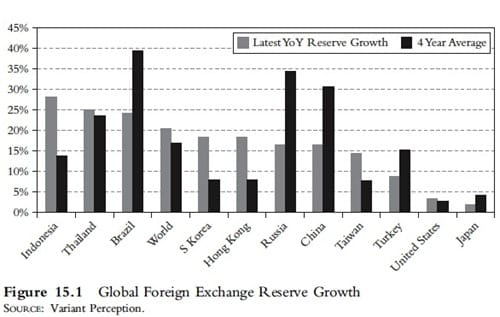
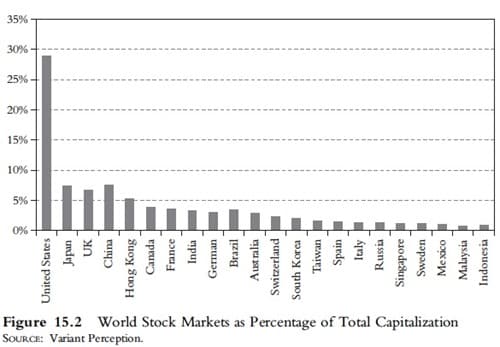
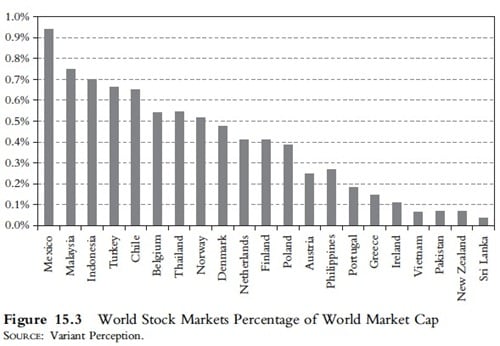
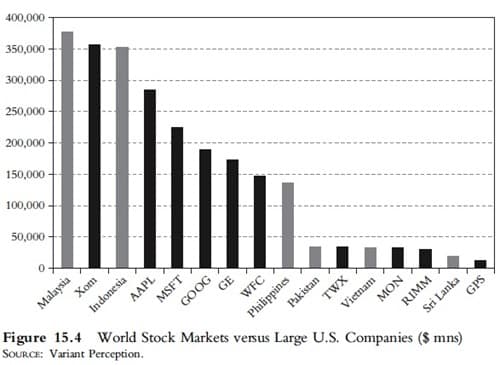
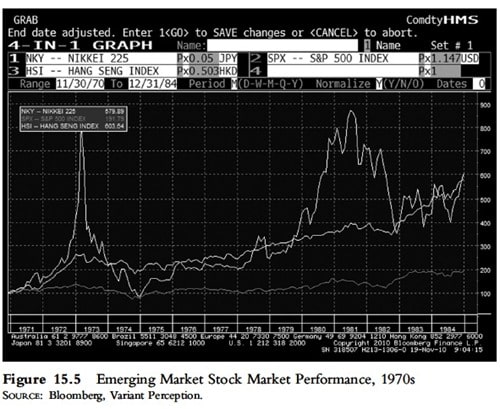
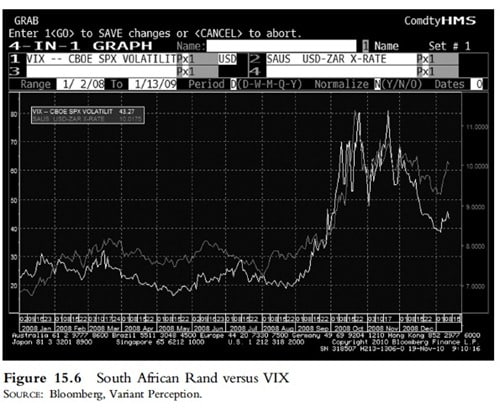
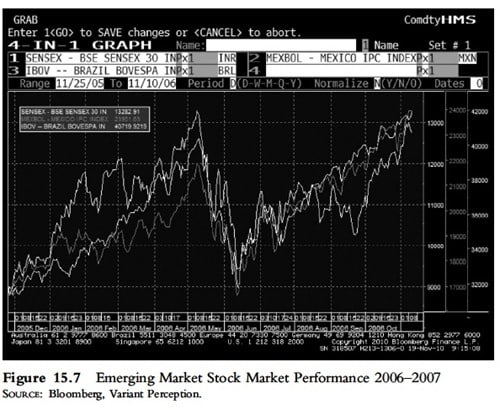
I like the article. It makes a point I didn’t think about, even though I should have. Somehow it made me think of Eastern Europe and the Baltics. I live in Romania, and I know we’ve seen lots of funding from the bigger EU economies (mostly via banks) fueling a real estate and consumption bubble, only to be then starved of foreign currency once the recession hit. It took some bankers gentlemen agreements to not have funds flow out and squeeze countries like mine dry, central banks and EU level negotiations playing of course huge roles in all of this.
But, who will really be able to stop foreign investors, coming from all over the world, from cashing in their winnings (or stop their losses) and leave from Asia and other EM? Consensus sure comes hard in EU, but it will come even harder in a situation when there’s no supranational body to try and put a stop to it.
I like the article. It makes a point I didn’t think about, even though I should have. Somehow it made me think of Eastern Europe and the Baltics. I live in Romania, and I know we’ve seen lots of funding from the bigger EU economies (mostly via banks) fueling a real estate and consumption bubble, only to be then starved of foreign currency once the recession hit. It took some bankers gentlemen agreements to not have funds flow out and squeeze countries like mine dry, central banks and EU level negotiations playing of course huge roles in all of this.
But, who will really be able to stop foreign investors, coming from all over the world, from cashing in their winnings (or stop their losses) and leave from Asia and other EM? Consensus sure comes hard in EU, but it will come even harder in a situation when there’s no supranational body to try and put a stop to it.
To compare investment professionals to lemmings is to do lemmings a disservice.
To compare investment professionals to lemmings is to do lemmings a disservice.